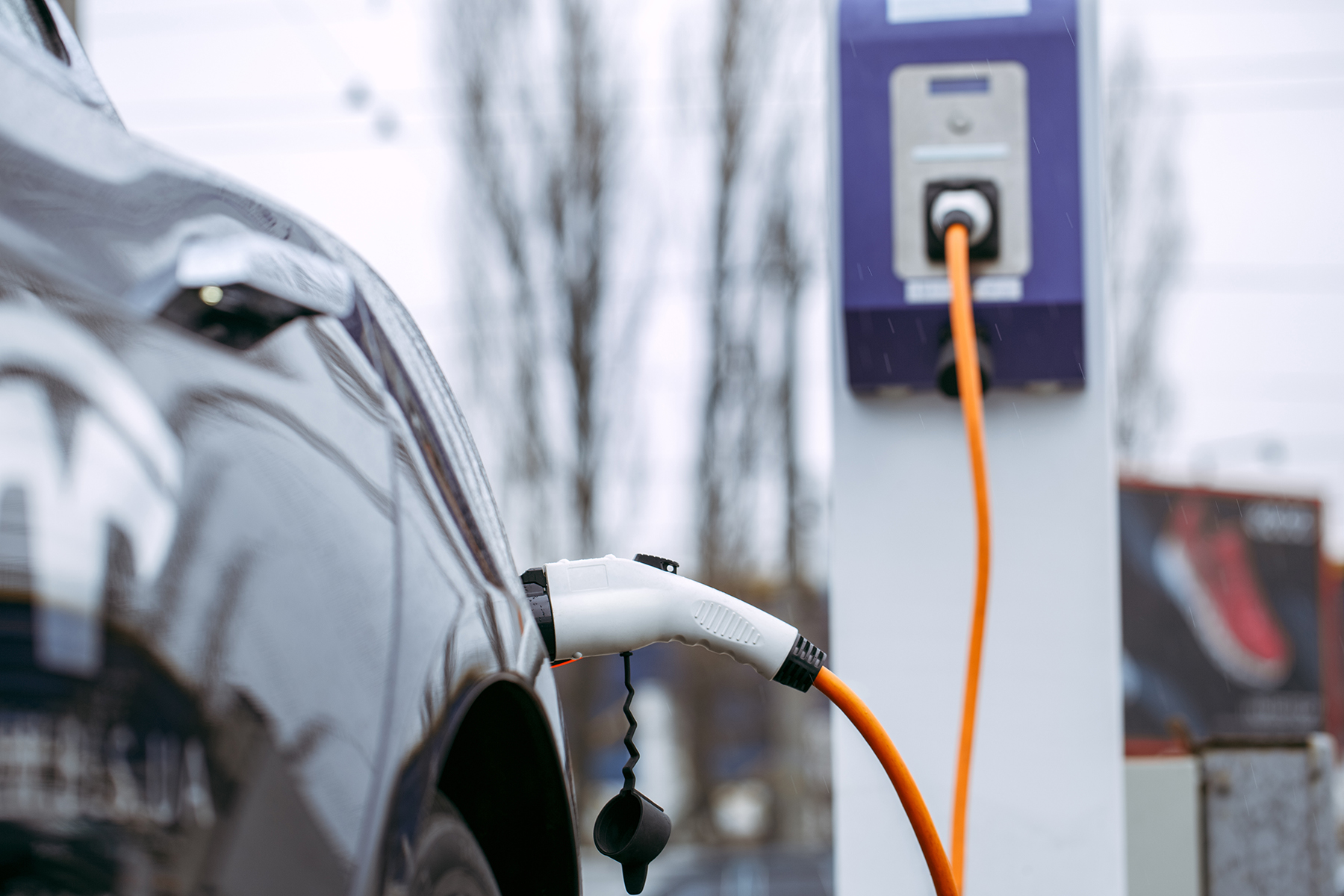Electric Vehicles (EVs) that have lower CO2 emissions offer a solution to create a green fleet, and by 2035 full EVs are planned to be the only type of new cars available to purchase, as pure petrol, diesel and hybrids cars will no longer be manufactured.
The Alan Jones Company Car Report reports that 36% of companies encourage employees to opt for a fully Electric Vehicle or a Hybrid Electric Vehicle, which means adoption has started but there’s still a way to go. Understanding the best way to make the transition is key.
There are challenges when it comes to choosing EV fleet vehicles such as upfront costs, charging infrastructure and installation, however, there are options to help reduce costs and make savings.
Here at Car Benefit Solutions, we offer multiple ways to deliver employee car benefits such as Employee Car Ownership Schemes (ECOS), Salary Sacrifice Cars and Business Car Leasing – all of which can help your business when it comes to choosing EV fleet vehicles.
To learn more about moving to an electric car fleet, read our blog: The Best Way to Transition Company Cars to EVs.
What are the five considerations when choosing your EV fleet vehicles?
1) Cost of EV fleets
The upfront cost of EVs for business includes the price of the vehicles and the necessary charging infrastructure. While EVs can be more expensive initially, their prices are steadily decreasing. Long-term, EVs can be more cost efficient to run than traditional fuel types, if they’re utilised for their efficiencies.
According to issue two of Allstar AllCosts, which looks at data from epyx to compare petrol versus EVs for business during their first three years on the road, states that the electric variant is cheaper by approximately 40%. This is despite both the petrol and electric models covering similar mileage during this period, with electric models averaging about 20% less distance.
This cost difference can be mainly put down to the electric cars in this sample reviewed require much less servicing and fewer repairs over a three-year lifecycle for standard wear and tear. However, beyond the first three years, more maintenance will likely be needed as the vehicle ages.
When it comes to financing options when choosing EV fleet vehicles, you can opt to outright purchase, or have a business leasing or salary sacrifice arrangement, where with either option, you’re essentially renting the car for a fixed price to your business, and you then allocate or allow your employee to choose their own car.
2) Range and charging infrastructure
Strategic planning for EV infrastructure development is key to running and maintaining an efficient fleet. In preparation, your business should consider:
- Fleet size, vehicle types, and daily usage patterns.
- Power capacity at your facilities and potential upgrades.
- Availability of Government grants and incentives for EV infrastructure.
Long distance journeys have to be planned out for fully electric vehicles or plug-in hybrids if these drivers want to utilise the electric part of the engine.
Costs to install electric chargers are another concern, whether at home or at business premises, with the average cost of a home charger installation being between £600 – £1,000, which should cover the EV charger itself and the labour costs. For businesses, the Energy Saving Trust reports the cost at anything from £1,500 up to £35,000, with the speed of charging being a significant factor in the price variation.
Under the Electric Vehicle Homecharge Scheme, grants are available from the Office for Zero Emission Vehicles (OZEV) but there’s certain eligibility criteria. If you have a small to medium business, grants are available for installing multiple EV chargepoint sockets. The grant covers 75% of the cost of the work, up to a maximum of £15,000 and you can get up to five grants but they must be across five different sites. This could be a beneficial enhancement in addition to home charging for your employees, especially if they have limited access to home charging.
Despite the challenges, there’s evidence the Electric Vehicle charging infrastructure is growing, as according to ZapMap: ‘At the end of January 2025, there were 74,611 electric vehicle charging points across the UK, across 37,613 charging locations and 109,737 connectors’.
To learn more about the EV charging infrastructure, read our blog: The Importance of Electric Vehicle Infrastructure.
3) Vehicle performance and models
EVs can vary significantly in performance based on several key factors such as range, acceleration, battery capacity, and efficiency. These variations mean that different EV models cater to different needs, whether it’s long-distance travel, quick acceleration, or overall efficiency.
The performance needs of higher mileage and lower mileage fleets can also vary significantly due to their different operational demands. Here’s a breakdown of the key differences:
Higher Mileage Fleets
Fuel efficiency – Fuel costs are a major expense for high-mileage fleets, so improving the fuel efficiency of your fleet can lead to significant cost savings.
Durability and reliability – Vehicles are used extensively and need to withstand long hours of operation.
Driver comfort and safety – Long hours on the road can be taxing for your employee. Ensuring their comfort and safety is crucial for maintaining productivity and reducing turnover.
Maintenance management – Vehicles require frequent maintenance to prevent breakdowns and extend their lifespan.
Lower Mileage Fleets
Operational efficiency – While fuel costs are still a concern, you should focus more on optimising daily operations and reducing downtime.
Cost management – Tighter budgets, so managing costs effectively is crucial.
Flexibility and adaptability – Vehicles often need to be more adaptable to changing demands and shorter trips.
Environmental impact – With increasing focus on sustainability, lower mileage fleets can benefit from adopting greener practices.
Understanding these differences help you tailor your strategies to meet the specific needs of your operations, ensuring efficiency, cost-effectiveness, and sustainability.
4) Employee preference
Providing employees with a sustainable fleet offers numerous benefits, especially for those keen on reducing their environmental footprint. Here are some key advantages:
Environmental Benefits
Green fleets can significantly reduce greenhouse gas emissions compared to traditional internal combustion engine vehicles. By adopting cleaner technologies, you can help decrease air pollution, contributing to a healthier environment. Green fleets often use less energy, thanks to fuel-efficient vehicles that don’t rely on non-renewable energy sources.
Economic Benefits
Electric and hybrid vehicles typically have lower fuel costs, which can lead to savings over time. However, charging costs will vary from vehicle to vehicle and where the vehicles are charged.
Employee Benefits
Modern green fleet vehicles often come with advanced features that can improve comfort and safety for your employee. They could also feel more satisfied and motivated working for a company that demonstrates a commitment to sustainability and social responsibility, which could also support attracting and retaining top talent.
5) Business needs
You might not be ready to go fully electric today. You might be aiming for a mix of EVs with other low-emission technologies, as well as some traditional fuel types too.
It’s important to evaluate your budget and long-term cost goals. Review the upfront costs, total cost of ownership (TCO), potential fuel savings, infrastructure and installations required to keep an electric fleet on the road. You should also weigh up the sustainability benefits of EVs against the practical considerations for your fleet.
This will help to ensure your business is prepared for a successful transition.
The future of EV fleets
We know the transition to electric is coming, so it’s probably better to be ahead of the curve than behind it. EVs that have lower CO2 emissions offer a solution for improving your green credentials, and by 2035 full EVs are planned to be the only type of new cars available to purchase, as pure petrol, diesel and hybrids cars will no longer be manufactured. The Government reinstated the original deadline of 2030 to ban the manufacture of petrol and diesel vehicles, while new hybrids will continue to be produced until 2035. With the original 2030 date ban being brought back, starting your transition sooner rather than later might be a good decision.
As new EV models come to market, the advancements in battery technology, range and variation in model availability are improving, meaning choosing your EV fleet vehicles to suit business could become an easier task over time. However, it may not be right for your business to go full electric today due to the financial and operational impacts. To learn more about how to manage your transition to electric, read our white paper: A Sustainable Future – The Journey to Electric Vehicles.
Looking for EV fleet support?
The transition to an electric fleet will be different for every company, and it may not be right for your business to go fully electric today, but there’s multiple options for electrifying your fleet. Here at Car Benefit Solutions, our Salary Sacrifice Cars are best suited for an electric fleet but this can be one part of your overall solution alongside our other products, creating a blended car benefit package.
If you’re looking for a fleet partner that can help you make the transition to EVs, get in touch with us today.


